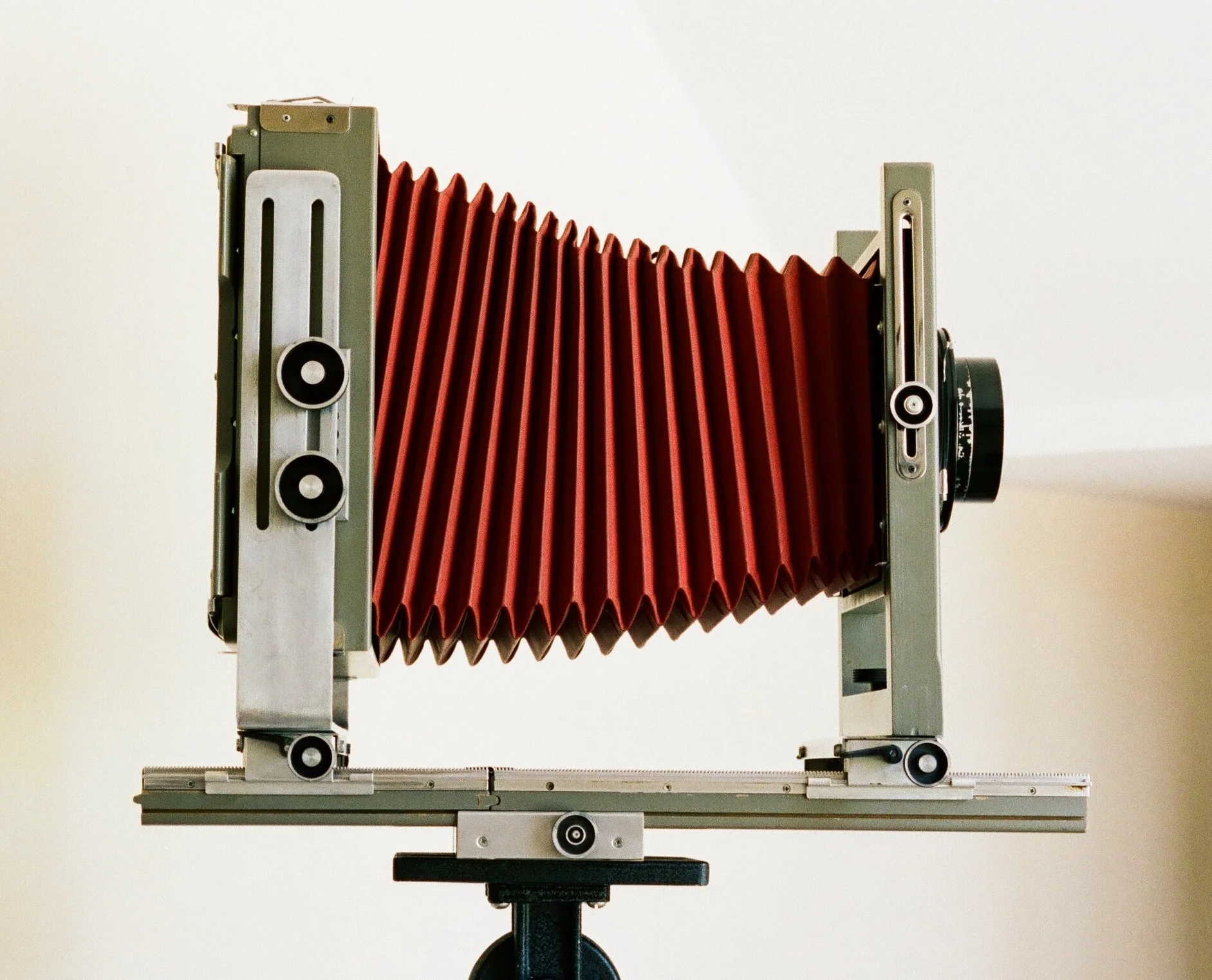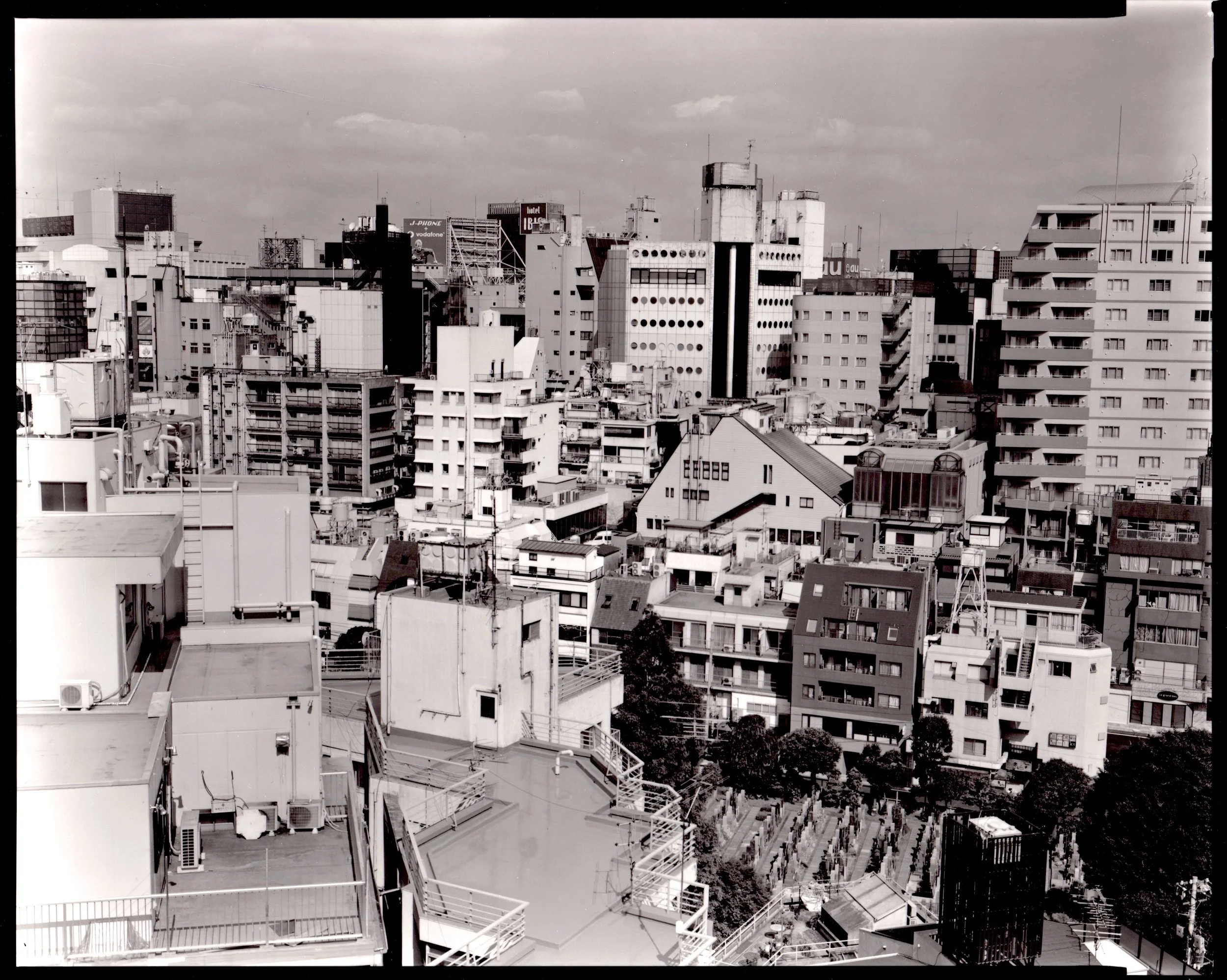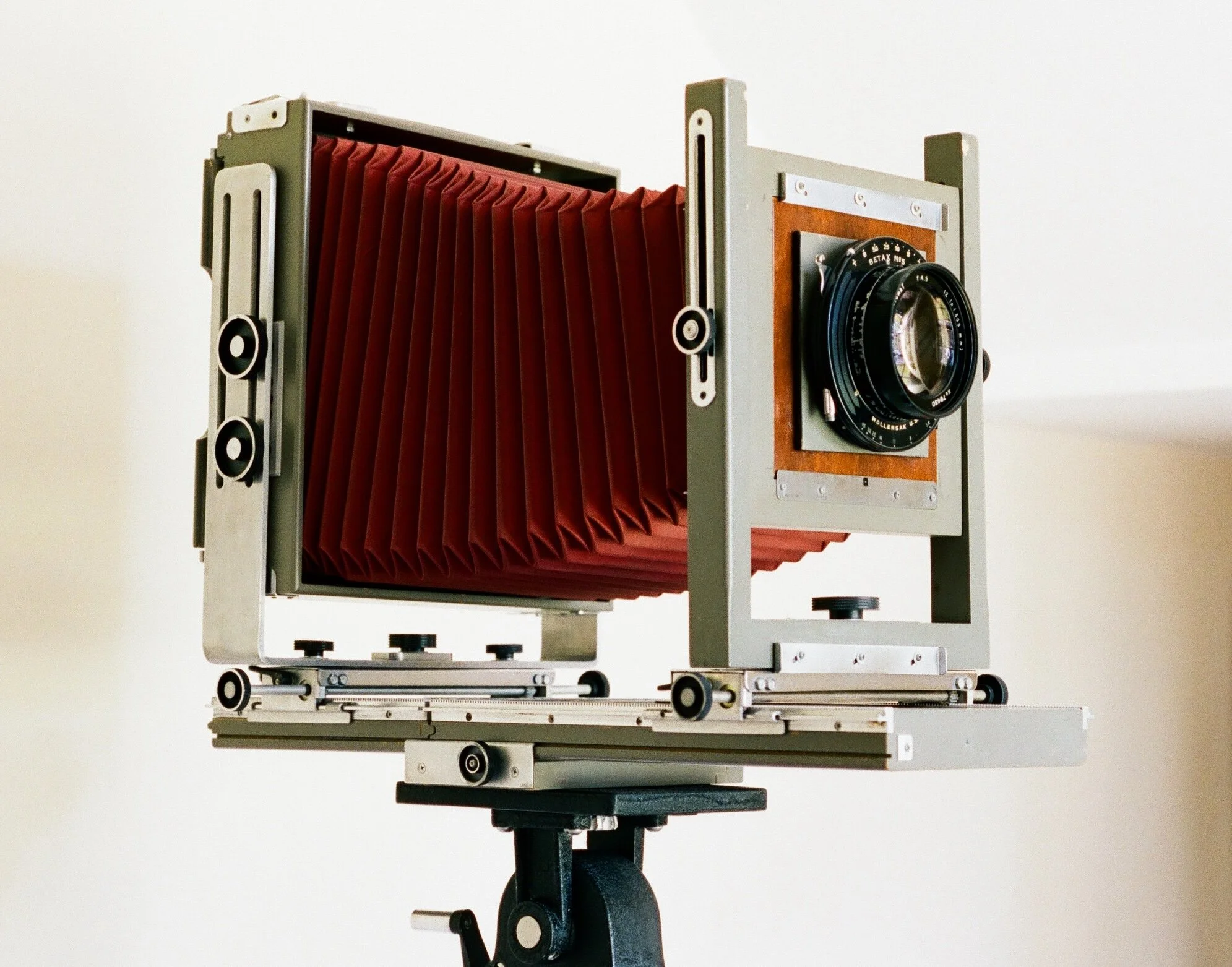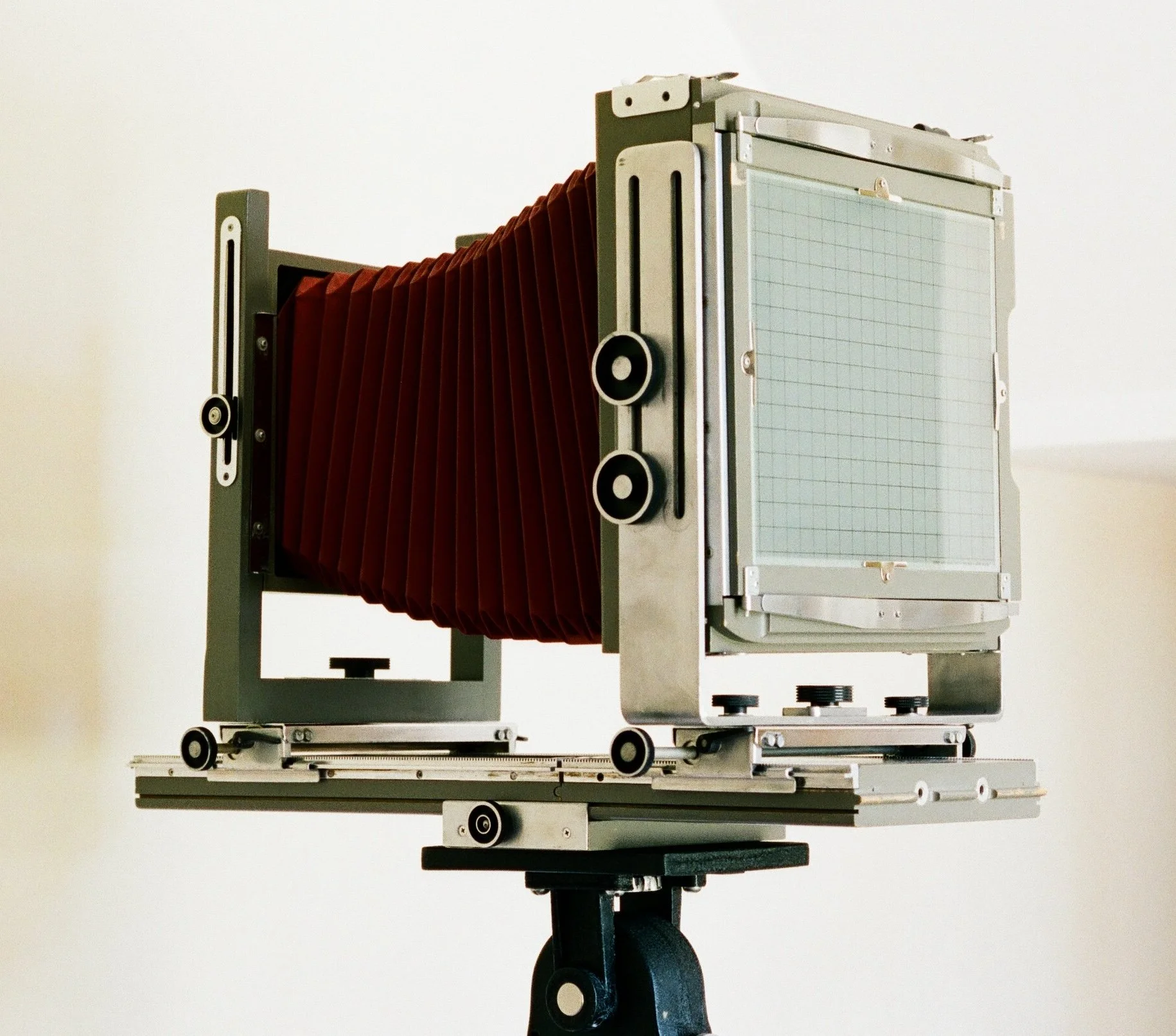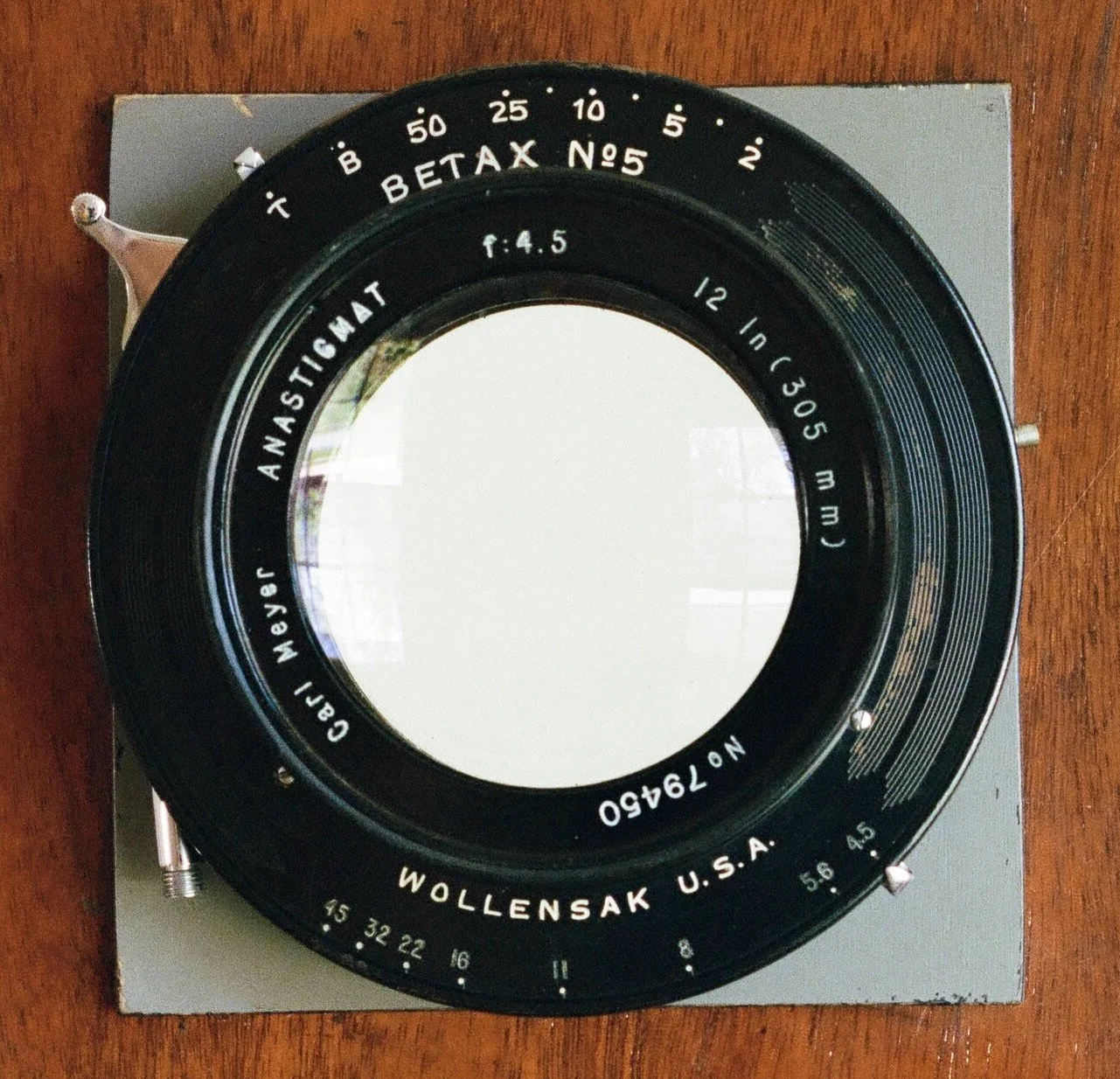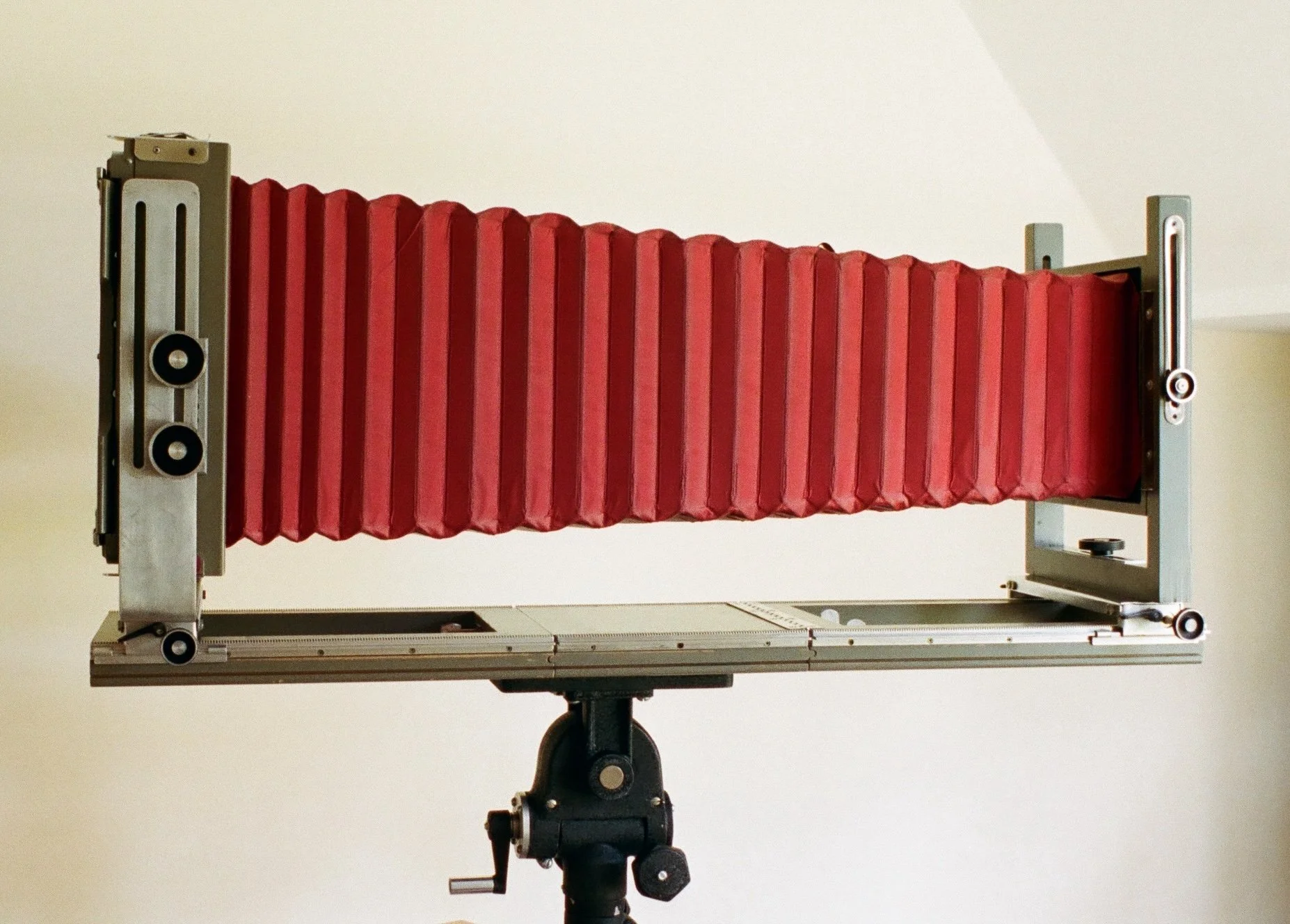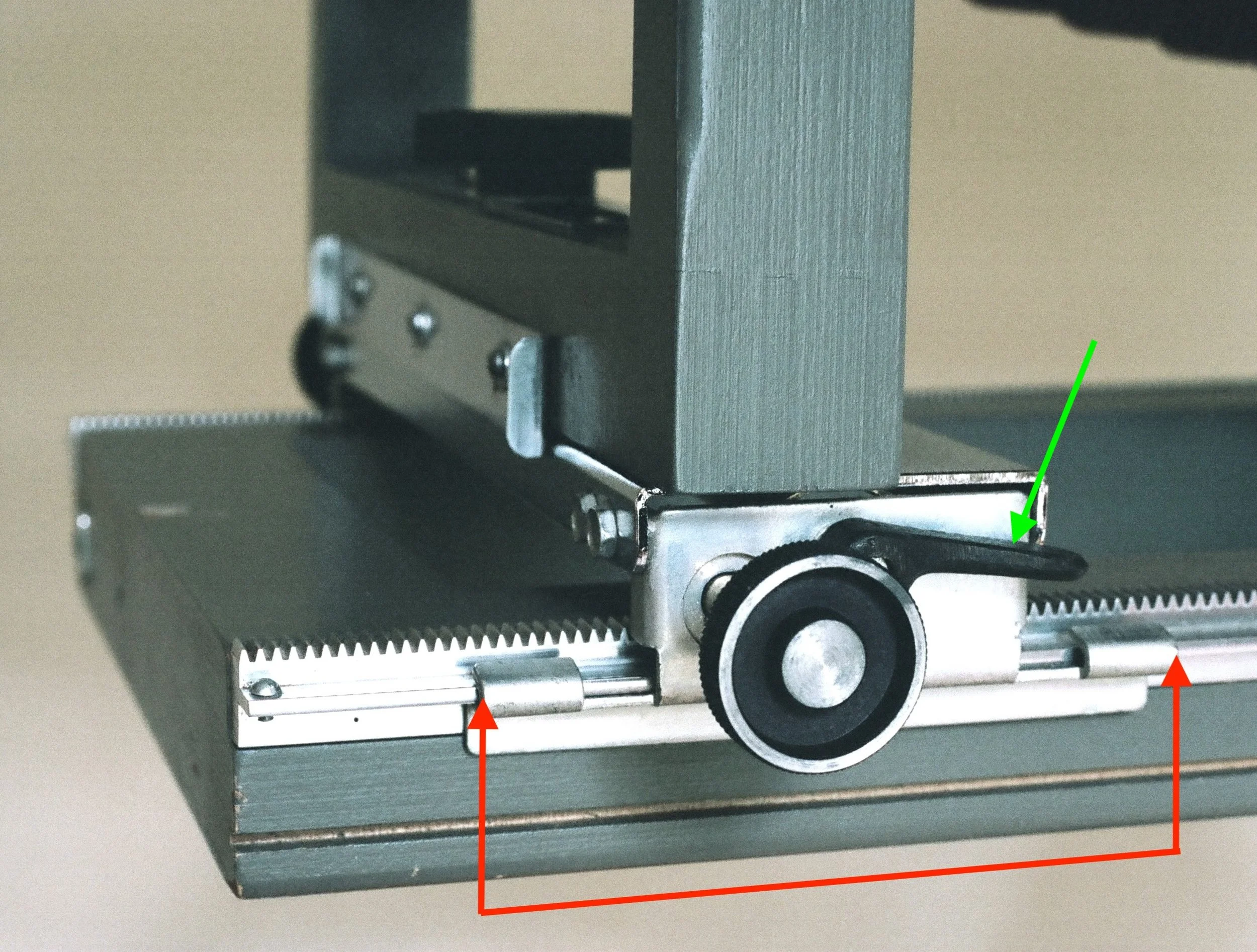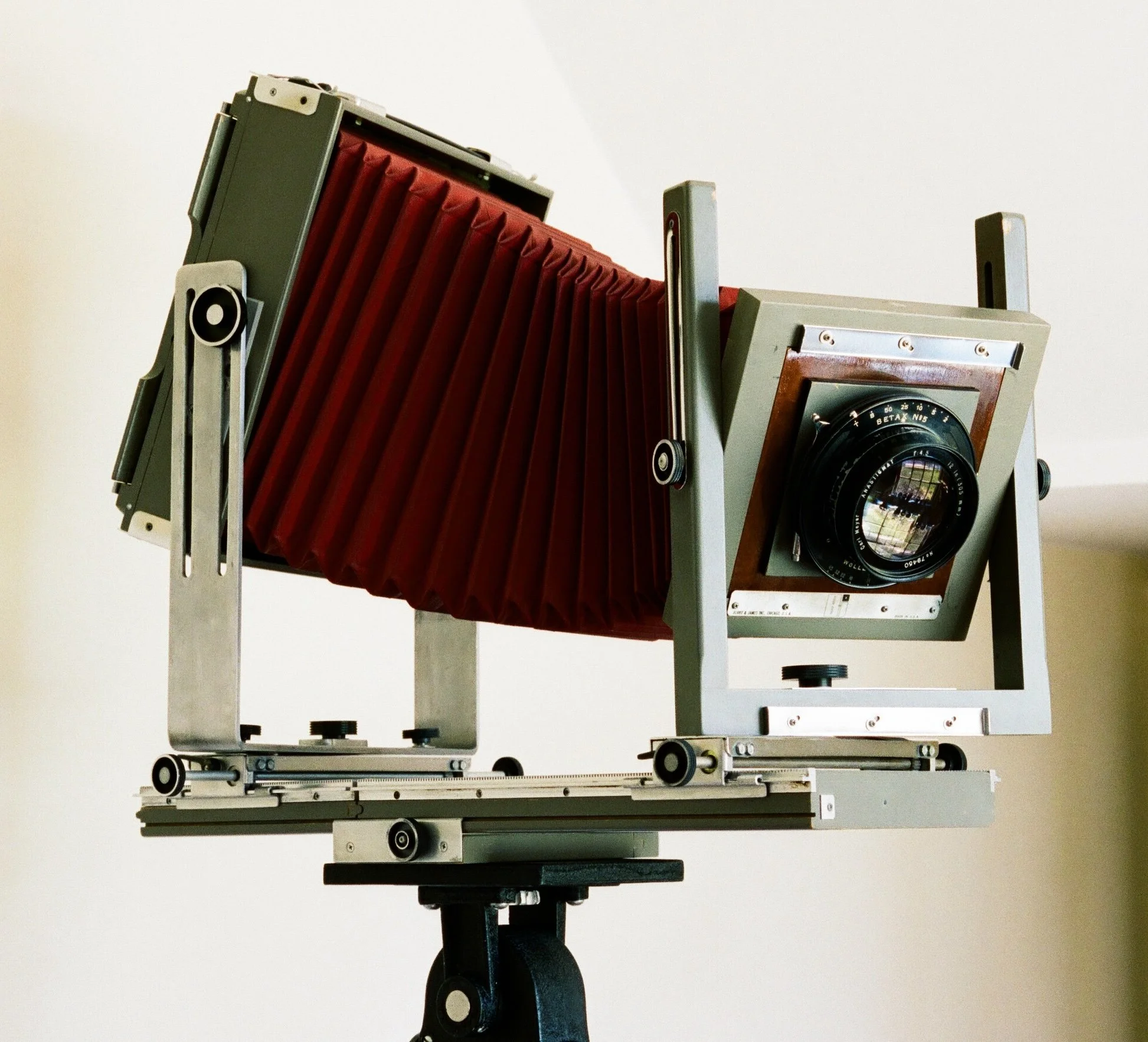8x10 Burke & James Commercial View
An underdog in the large format world.
8x10 Burke & James with 12 inch f/4.5 Carl Meyar Anastigmat. Under the bed is the balance block. (Color photos of the camera were made with a Nikon F, 55mm f/3.5 Micro-Nikkor-P.C, and Portra 400.)
Function over style
Many large format cameras have beautiful wood finishes. But not this one. At the Burke & James factory in Chicago, 8x10 cameras received almost humorously unattractive gray paint jobs. Which makes them large format underdogs.
But as the Carroll Shelby character (played by Matt Damon) said in the 2019 film ‘Ford v. Ferrari’:
‘Looks aren’t everything’
Roppongi, Tokyo. 8x10 Burke & James, 12 inch f/4.5 Carl Meyer Anastigmat, Tri-X. Printed on Oriental Seagull Grade 2 FB paper and selenium toned. Negative and print: early 2000s.
8x10 Burke & James
8x10 Burke & James
Not so portable…
A capable camera but not for every situation due to its weight. For carrying around on location, I use the 8x10 Improved Seneca View.
…but a very solid platform
The 8x10 Burke & James is an ideal platform for big, heavy lenses like my 12-inch f/4.5 Carl Meyer Anastigmat. This is one of my favorites. The large aperture helps in composition and focusing, and it creates nice bokeh.
12 inch f/4.5 Carl Meyar Anastigmat
Roppongi, Tokyo. Negative: 8x10 Burke & James, 12 inch f/4.5 Carl Meyer Anastigmat, HP5+. Printed on Oriental Seagull Grade 2 FB paper and selenium toned. Negative and print: early 2000s.
8x10 Burke & James on a Majestic tripod. Camera and tripod were both made in Chicago. The extension bed is attached and the balance block is not fitted.
A good design and sturdy (albeit not smooth) build quality
The 8x10 Burke and James is a good match for large, heavy lenses due to its mass and design. For example, the front and rear standards have a ‘long wheelbase’ at their point of attachment to the bed, to resist wobbling.
Focus locking on the front and rear standards is done with levers that are separate from the focus knobs. Movements are not geared. The focus controls work well and can be finely adjusted, but feel rough. Perhaps due to similar design/cost trade-offs that resulted in the gray paint?
Three design/build features that add stability: (1) — ‘Long wheelbase’ standard support, mounted on a metal track (red arrows). Lighter flatbed cameras such as the Seneca use less sturdy wooden grooves, and a shorter wheelbase for more compact folding.. (2) — Focus lock lever (green arrow) rather than a friction knob. (3) — Everything in this picture is either wood or metal, no plastic.
Roppongi, Tokyo. 8x10 Burke & James, 12 inch f/4.5 Carl Meyer Anastigmat, HP5+. Printed on Oriental Seagull Grade 2 FB paper. Negative and print: early 2000s.
Complete movements
This is a flatbed with the movement capability of a monorail. That is, limited only by the bellows. And unlike monorails, it folds up into a fairly compact package. (Some monorail cameras can be compactly stowed but only after disassembly.) The bellows is not interchangeable.
8x10 Burke & James
References / further reading
Stroebel, L. 1993. View Camera Technique, 6th ed. Boston: Focal Press.
